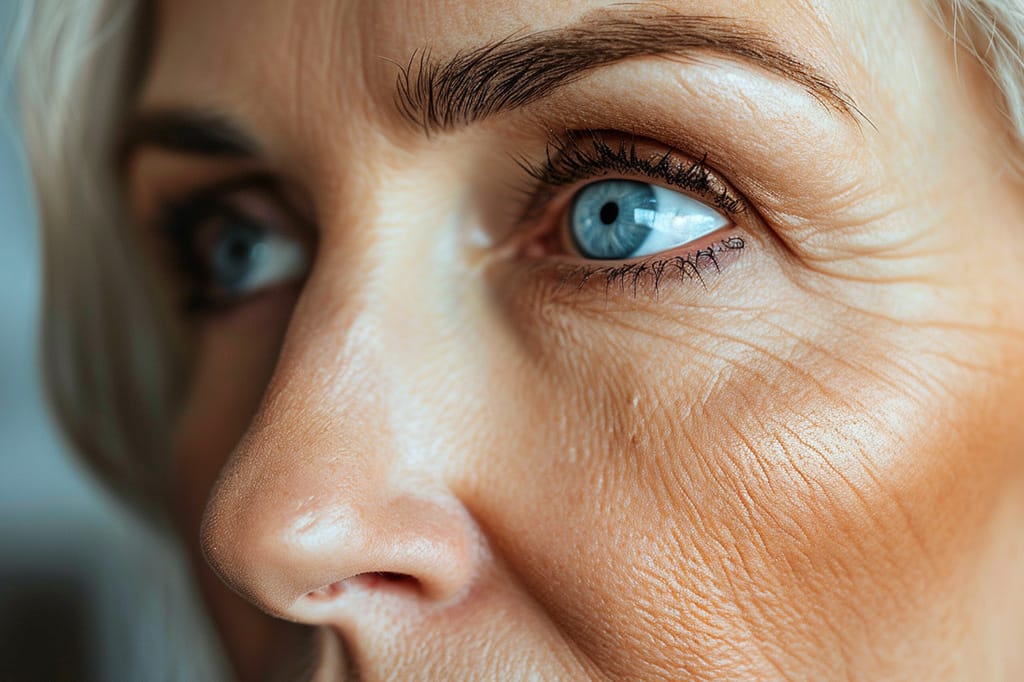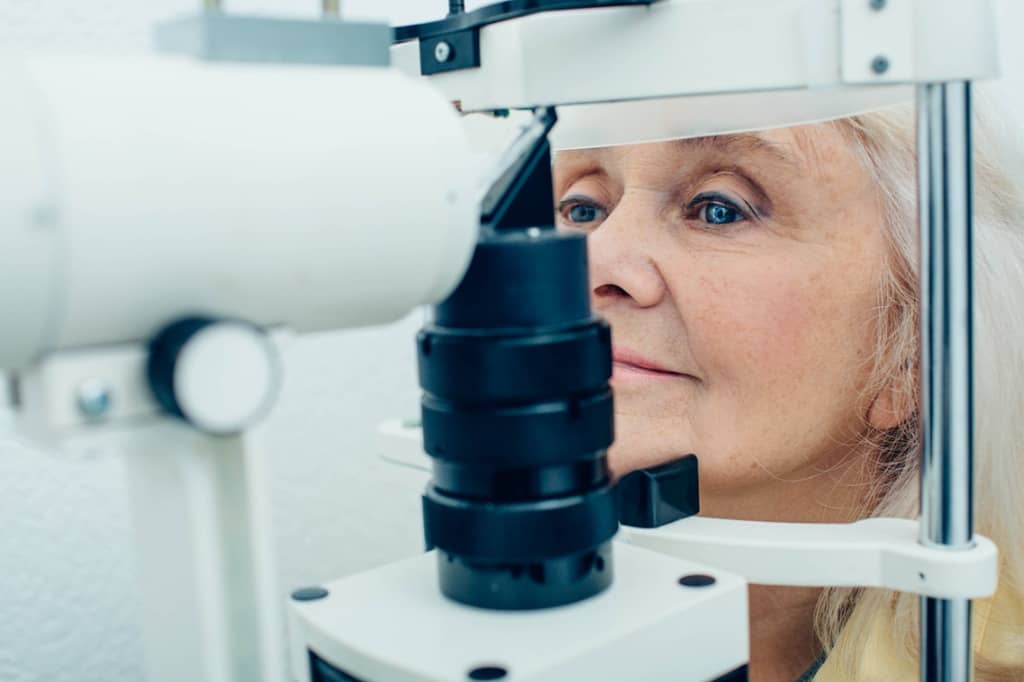Risk Factors for Glaucoma and Ways to Prevent Vision Loss
Glaucoma is the second leading cause of blindness worldwide, affecting nearly 3 million Americans. Unfortunately, roughly half of those affected don’t even know they have the disease. This is because the most common type of glaucoma, open-angle glaucoma, often presents no symptoms in the early stages. Therefore, it is imperative to be aware of the risk factors for the disease so you can take steps to prevent vision loss.
Types of Glaucoma
There are two main types of glaucoma: open-angle glaucoma and narrow-angle glaucoma. Although open-angle glaucoma is the most common type, narrow-angle glaucoma is considered more severe because it may occur suddenly and pose a greater threat to your vision.
Open-angle Glaucoma
This type of glaucoma usually occurs gradually and happens when the eye does not drain fluid properly. As a result, eye pressure will accumulate and take a toll on the optic nerve. Initially, this will not cause any pain or vision problems. However, over time it may lead to irreversible vision loss. Some people have optic nerves that are sensitive to normal eye pressure, making them more susceptible to developing the condition. This is known as normal-tension glaucoma.
Narrow-angle Glaucoma
Also called angle-closure or closed-angle glaucoma, this type of glaucoma happens when the iris is too close to the drainage channel in the eye. This may cause the drainage channel to become blocked, leading to an increase in eye pressure. In some cases, the drainage channel may become completely blocked. This is known as an acute attack. If you are experiencing an acute attack, it is essential to see a doctor immediately, as this may cause serious vision problems and even blindness in a short amount of time due to the rapid build-up of pressure.
Who is at Risk for Glaucoma?
Anyone can get glaucoma, but certain groups and risk factors make some people more susceptible to the disease. Glaucoma is commonly seen in those over 40, and you are more likely to develop the condition if you have family members who have been diagnosed with glaucoma. Other risk factors for the disease include:
- Being of African, Hispanic, or Asian heritage
- Having corneas that are thin in the center
- The thinning of the optic nerve
- Having diabetes or high blood pressure
- Previous eye injuries or surgery
- Long-term use of steroid medications
- Being nearsighted
Those with more than one of the above risk factors are at an even higher risk for developing the condition. If you are concerned about your risk for glaucoma, talk to an ophthalmologist. They will be able to perform a comprehensive eye exam, determine if you are at risk for the disease, and assist you in taking steps to prevent vision loss.
Glaucoma Symptoms
Glaucoma leads to optic nerve damage, which may result in vision loss. Your optic nerve consists of over a million tiny nerve fibers that send visual information from your eye to your brain. Glaucoma causes these nerve fibers to deteriorate gradually, resulting in peripheral vision loss. If the disease progresses, it may eventually lead to complete blindness once all of the optic nerve fibers have deteriorated.
Open-angle Glaucoma Symptoms
In open-angle glaucoma, there are usually no symptoms until the disease has progressed and vision is already being lost. This is why open-angle glaucoma is often called the “silent thief of sight.” The best way to protect your vision is to get regular comprehensive eye exams so that the disease can be detected early and treated before it causes significant damage.
Narrow-angle Glaucoma Symptoms
Those susceptible to narrow-angle glaucoma typically show no symptoms before an acute attack. If you are experiencing an acute attack, you may have the following symptoms:
- Severe eye pain
- Eye redness
- Blurred or decreased vision
- Headaches
- Nausea or vomiting
- Seeing halos or rainbows
As mentioned, narrow-angle glaucoma is a medical emergency and may cause serious vision problems or even vision loss in a short amount of time if left untreated. Therefore, if you notice any of the above symptoms, see an ophthalmologist immediately.
5 Tips for Minimizing Glaucoma Risk
Although glaucoma cannot be cured, there are steps you may take to minimize your risk for the disease and protect your vision. Implementing the following five tips into your routine may help reduce your risk for glaucoma and delay the progression of the disease.
1. Get Regular Eye Exams
As we age, it is crucial to get regular comprehensive eye exams even if you are not experiencing any vision problems. This is the best way to catch glaucoma early so that it may be treated before any significant damage is done. If you have a high risk of developing glaucoma, your eye doctor may conduct a pressure test known as tonometry. During a tonometry test, numbing drops are placed in your eye before a device is used to measure your eye pressure. If this pressure is too high, you may be diagnosed with glaucoma. If you are over the age of 35, it is recommended you get an eye exam annually.
2. Eat a Healthy Diet
Foods such as leafy greens, fruit, nuts, and fish are good for your overall health and may also help protect your vision. These foods contain nutrients, vitamins, and minerals that protect your body as well as your eyes. As a result, eating eye-healthy foods may help reduce your risk of developing glaucoma or other vision problems.
3. Avoid Head-down Positions
Placing your head below your heart for long periods of time may significantly increase your intraocular pressure. If you have glaucoma or are at high risk for developing the disease, avoid head-down positions whenever possible. Certain yoga poses and activities, such as hanging upside down, are prime examples of positions you should avoid.
4. Protect Your Eyes From Injury
If you have had a previous eye injury, you may be more likely to develop glaucoma. That being said, wearing eye protection when participating in activities where there is a risk of eye injury is important for everyone, not just those with a history of eye injuries. This includes activities such as playing sports and using power tools.
5. Avoid Over Exposure to Sunlight
UV rays from the sun may play a role in the development of glaucoma. To protect your eyes, wear polarized sunglasses when you are outdoors. Wearing a hat is also a good way to protect your eyes from the sun. If you wear prescription glasses, there are options to have UV protection added to your lenses.
Manage and Prevent Glaucoma with Cascade Eye & Skin Centers
Whether you have been diagnosed with glaucoma, are at risk, or are overdue for a comprehensive eye exam, Cascade Eye & Skin Centers has the expertise to provide you with the care you need. Our renowned ophthalmologists and optometrists offer the latest in glaucoma treatment and are committed to providing each patient with individualized care. Schedule an appointment and reduce your risk of vision loss.




